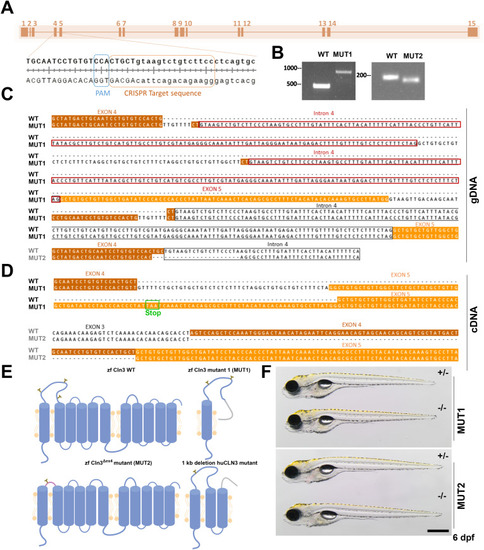Figure 2.
- ID
- ZDB-FIG-240111-24
- Publication
- Heins-Marroquin et al., 2024 - CLN3 deficiency leads to neurological and metabolic perturbations during early development
- Other Figures
- All Figure Page
- Back to All Figure Page
|
Generation of two stable |

